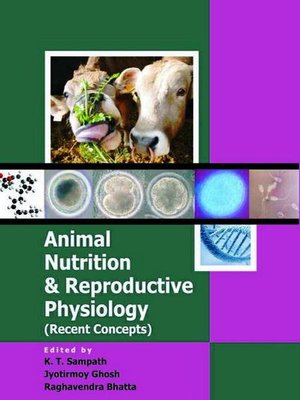
Sign up to save your library
With an OverDrive account, you can save your favorite libraries for at-a-glance information about availability. Find out more about OverDrive accounts.
Find this title in Libby, the library reading app by OverDrive.



Search for a digital library with this title
Title found at these libraries:
| Loading... |
Nutrition and reproductive physiology are two independent but intertwined fields of study which cannot be looked independently. The twin aspects face a tremendous pressure to perform in demanding situations and are considered most important for the researchers and policy makers. Important topics of these two areas are incorporated in this book which would be useful and effective for postgraduate and doctoral students and the researchers. The basic concepts in the beginning of each chapter are described focusing on the development and applications in those areas at the end. Thus the book would be more appealing to those who are in forefront of applied research in these two subjects. The entire book elaborated the themes which have relevance on present day research considering 36 very important topics spreading over five sections. The book would provide knowledge necessary to understand multiple aspects of nutritional principles, biotechnological approaches to improve fiber digestibility. It also has dedicated chapters on assisted reproduction covering both males and females aspects including gamete evaluation, preservation and sexing, ovarian biology, pregnancy signaling and uterine environments. In emerging technologies stem cells technology, nanotechnology, application of next generation sequencing in ruminal microbial genome analysis, meta-analysis of research results, bioinformatics analysis of protein sequences and issues related to technology transfer are covered. Interactions between environment and livestock are dealt in a separate section. A dedicated section is kept to address the issues like feed safety and quality control and existing regulations which have relevance to human health and export of animal products and feed ingredients. The comprehensive, compact and up-to-date information offered in this book would definitely enrich people and help designing research programs in these two areas. The contributors of this book chapter have vast knowledge and research experiences in those areas therefore the quality of content is enormous. Hope the book would bring a lot of excitement to the scientific and student community.






